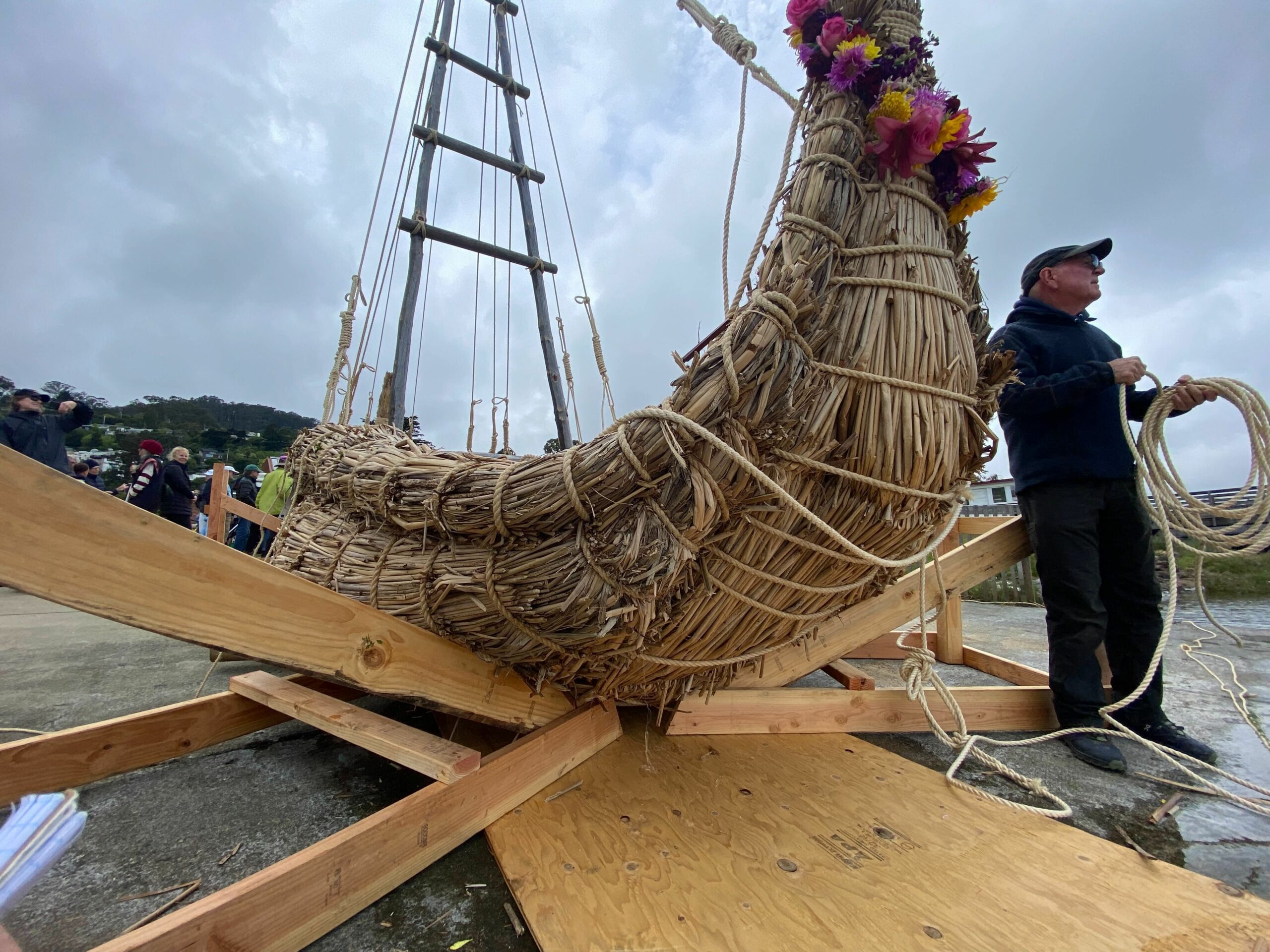Sausalito was once known for its shipbuilding prowess when hundreds of steel transport vessels, known as Liberty Ships, splashed into its waters during World War II.
But the nearly silent splash that occasioned the launching of Amana, or Seven Seas, was an entirely different affair Saturday afternoon.
The 30-foot, hand-built boat—made from tule reeds collected in California’s Lake County by a Pomo man—slipped from the ways of Sausalito’s Galilee Harbor into San Francisco Bay with its builder aboard as a crowd looked on.
For the past several weeks, Jin Ishikawa, a Japanese explorer, has been building the prototype vessel as part of his mission to sail a similar 60-foot boat to Hawaii in 2025.
“We want to re-create the navigation system of ancient Californians,” Ishikawa said aboard the tightly bound reed craft, as it swayed in the water at its new berth.
His plan is mostly to drift with the tides and use the stars to make his way to the islands, once he has built the larger boat.
“California has had the technology to build and move boats for 13,000 years. And, if you ride the winds and ocean currents, you can easily reach Hawaii. We will re-create the ancient reed boats used in California and examine the possibility of a new ocean route for Hawaiian immigration,” Ishikawa’s website, Expedition Amana, explained.
He’s no stranger to adverse conditions in out-of-the-way corners of the world. Although Ishikawa was born in Chiba prefecture and studied English literature, once he’d crossed the Sahara desert alone at 23, he said he couldn’t go back to normal life. He’s spent the last 30 years working and fundraising to pay for his adventures, which have included a solo canoe trip down South American rivers and a Pacific Ocean crossing in another, similar reed boat.
His latest plan was hatched more than four years ago, but the pandemic put a halt to the boat’s construction.
That idea and the boat have precedents.
Thor Heyerdahl, a notable Norwegian explorer, built a number of similar vessels to prove that ancient societies could cross oceans and hence potentially have links.
Called Kon-Tiki, Heyerdahl’s vessel sailed from South America to Polynesia in 1947. He later sailed a balsa wood raft across the Atlantic from Africa to the Caribbean. Many of his adventures were documented in films and books, although his theories have come under criticism from anthropologists who say there is ample evidence Polynesia was populated from east to west.
Ishikawa, who wants to prove only that ancient peoples had the technology for such journeys, has a connection to the Norwegian explorer that is more than theoretical. Kitín Muñoz—his mentor and the man who taught him to build reed boats—made a number of voyages similar to Heyerdahl’s. Ishikawa joined one such voyage across the Pacific in 1999, he said. He also participated in a similar journey across the Atlantic.
Ishikawa said he has been drawn to empty, distant places like the sea and the desert because he finds that he is closer with the natural world in such locales.
But any connection to the open ocean will have to wait, as he’s first got to spend months traversing the San Francisco Bay in his prototype. Ishikawa’s summer will be spent on board tweaking everything from the boat’s sail size and position to its rudder location.
In 2025, he plans to build the real boat in Sausalito and then set sail with six others to Hawaii on a roughly 75-day voyage, all without modern navigation techniques.
“He just wants to prove that it’s possible,” Expedition Amana coordinator Stan Teng said.
